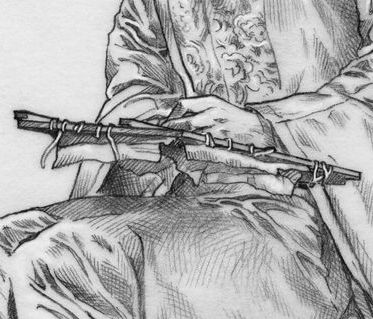“...only girls from the best noble families get the chance to serve an Earl’s wife...”
Boys and girls from high families were routinely sent away to serve in the household of their father’s noble connections. Learning how to serve your betters was considered an essential part of an aristocratic upbringing.
“...New clothes, big feasts...”
Giving clothes, or even just cloth, was an important part of the relationship between a lord and his household. Cloth was expensive, and the quality of the gift of ‘livery’ said much about the lord’s wealth. In later medieval times, lords started to give their household more standardised livery clothing in particular colours, to create a great effect when everyone was assembled.
“...some fat old man he owes a favour...”
Noble marriages were alliances between families, not between individuals, and the opinion of the couple being married was not considered important. Two of the Earls of Pembroke (William Marshal and William de Valence) were given wealthy brides as a demonstration of royal favour.
